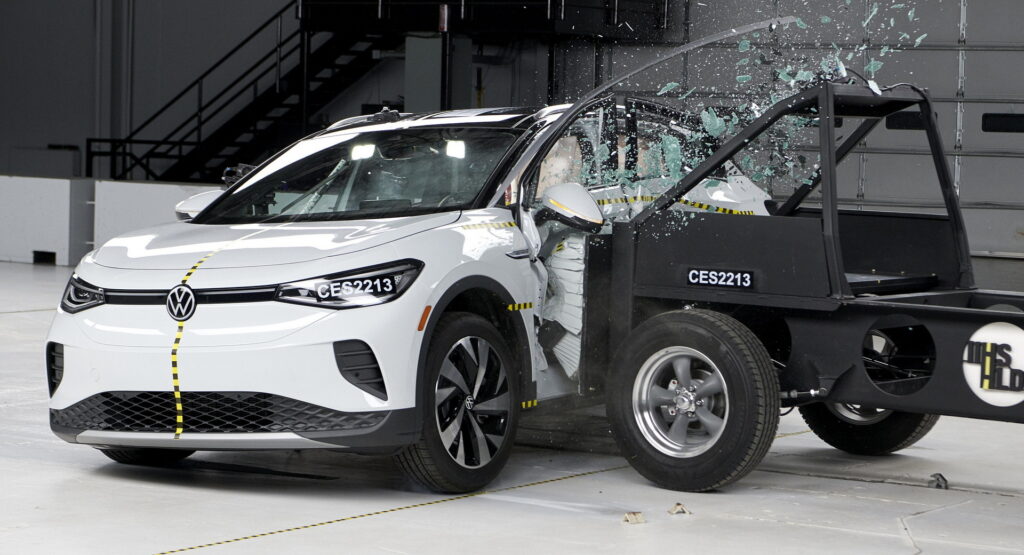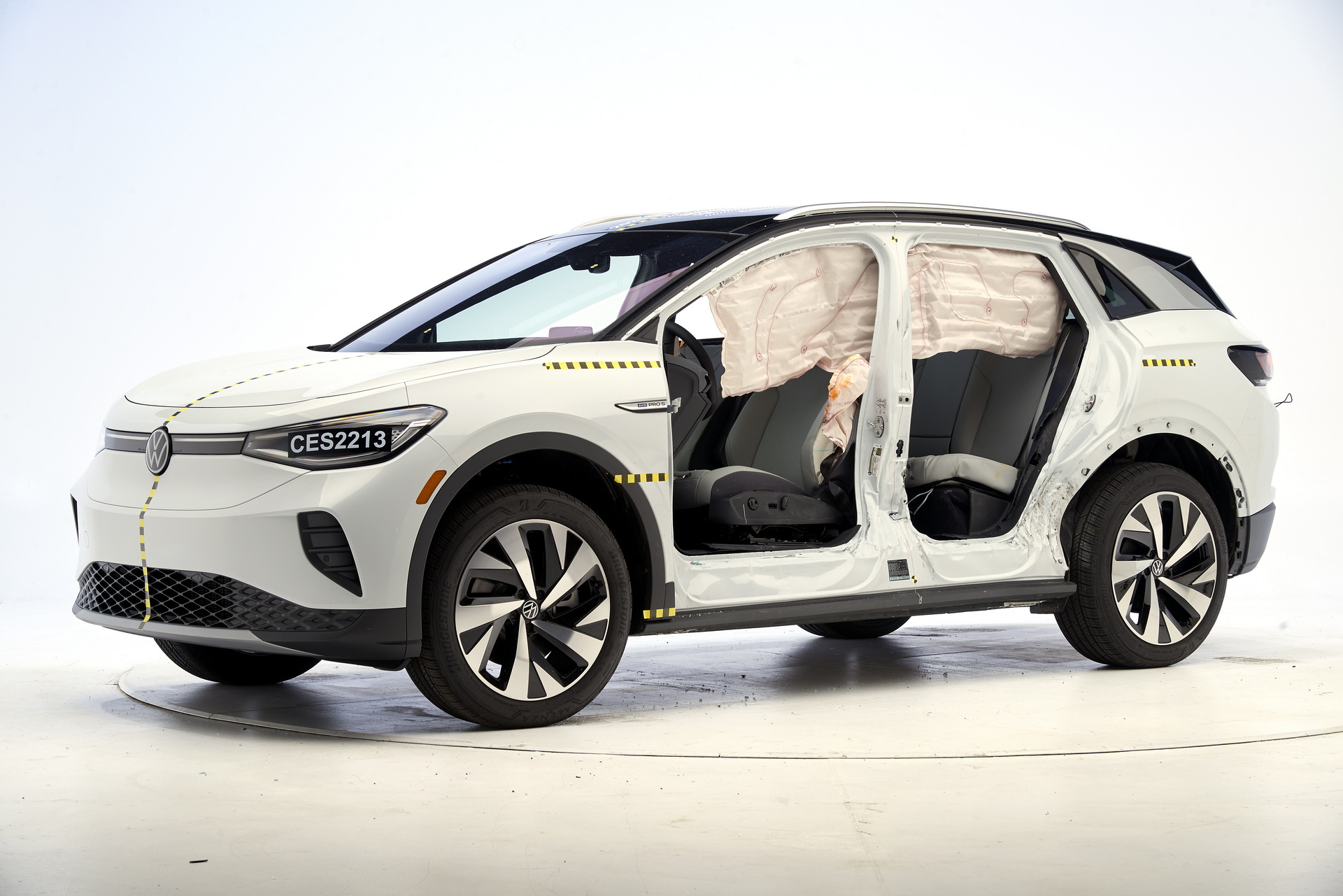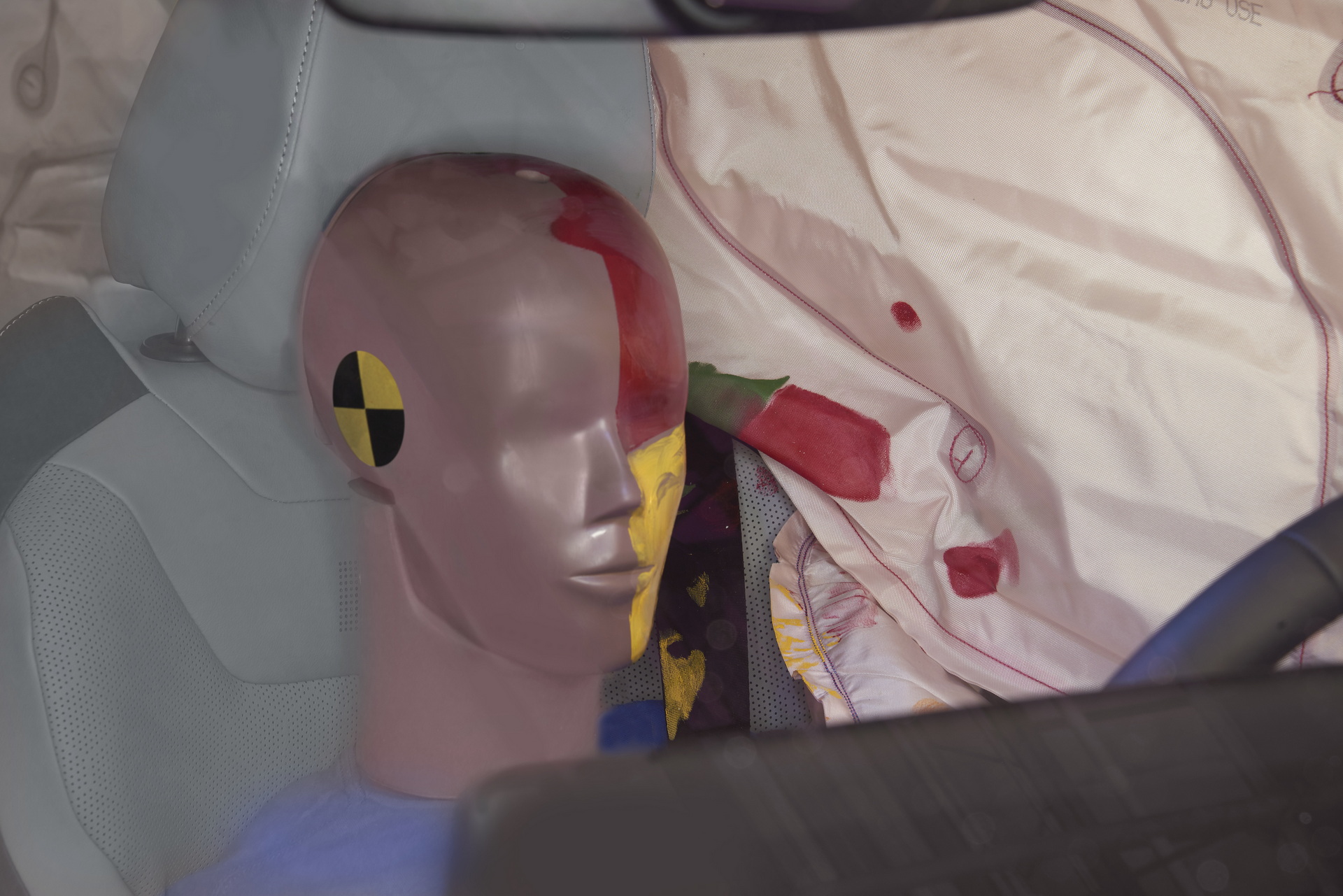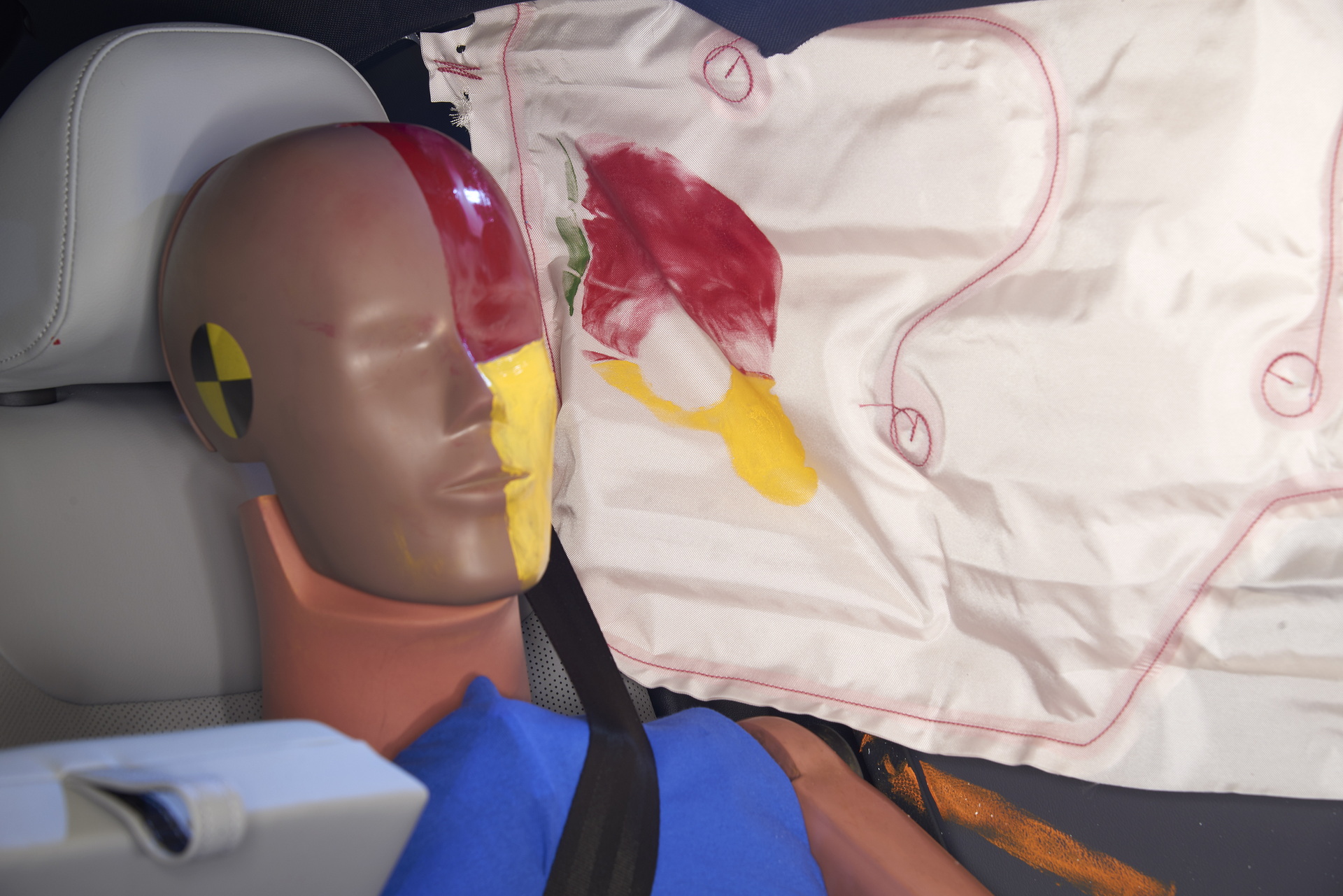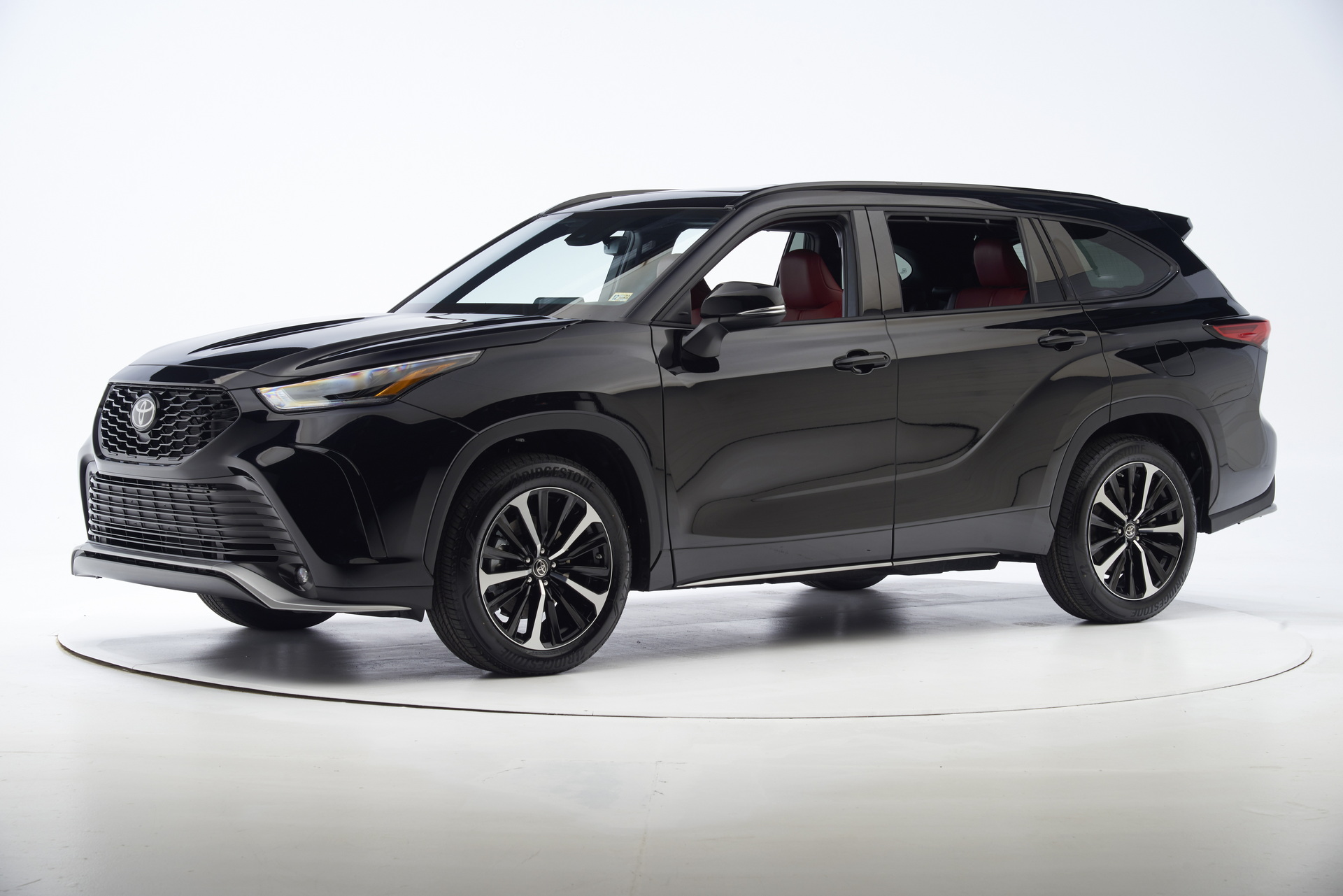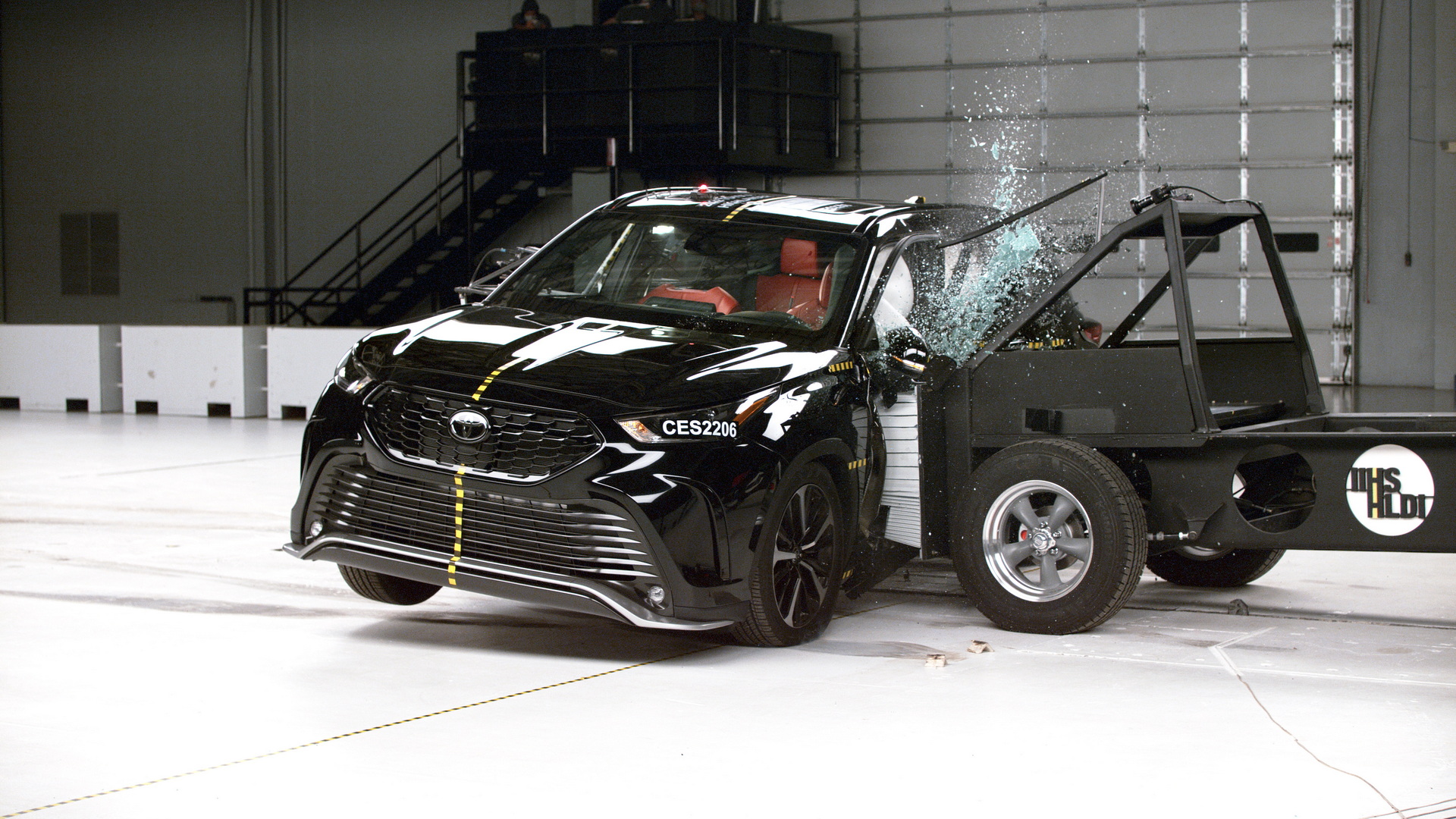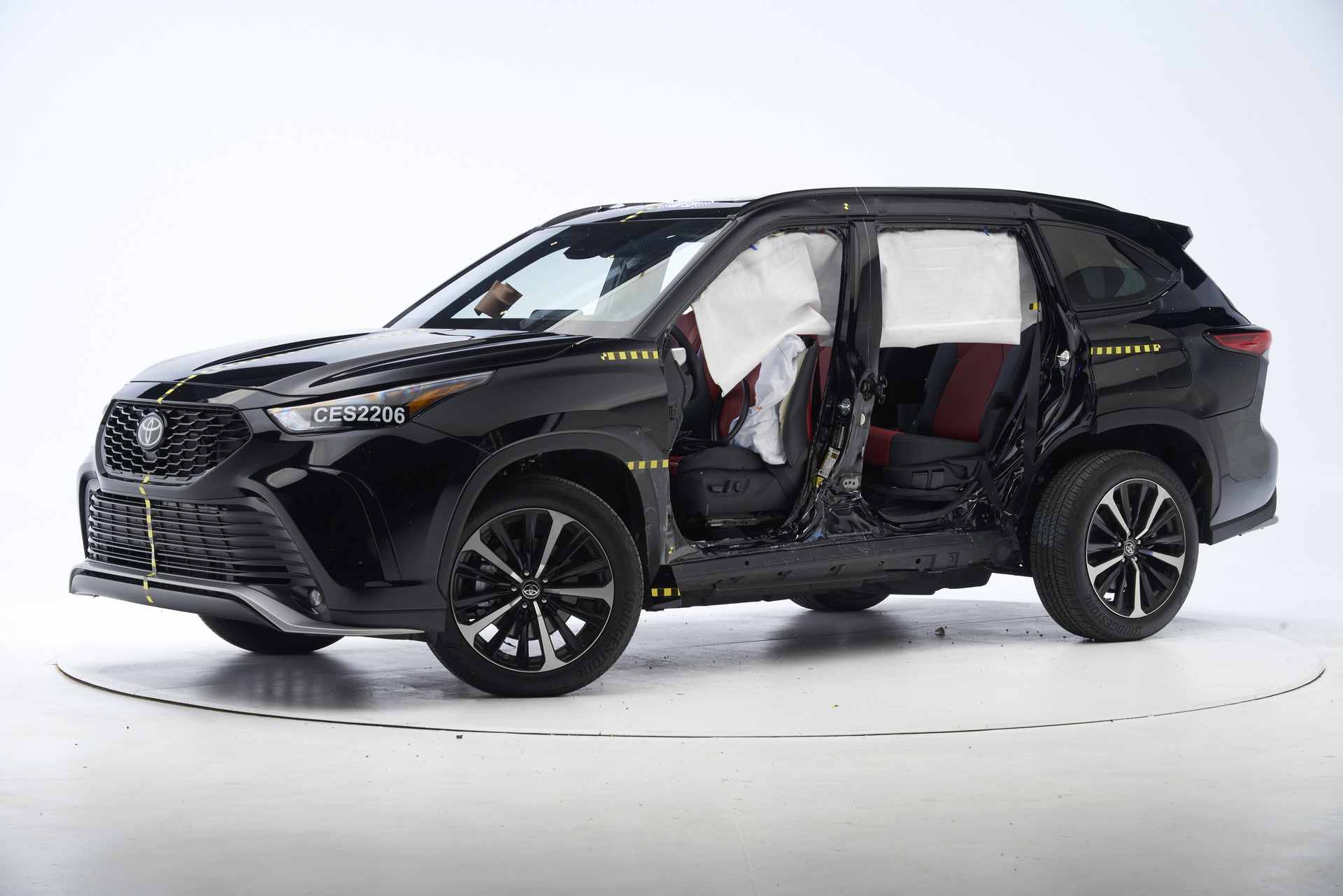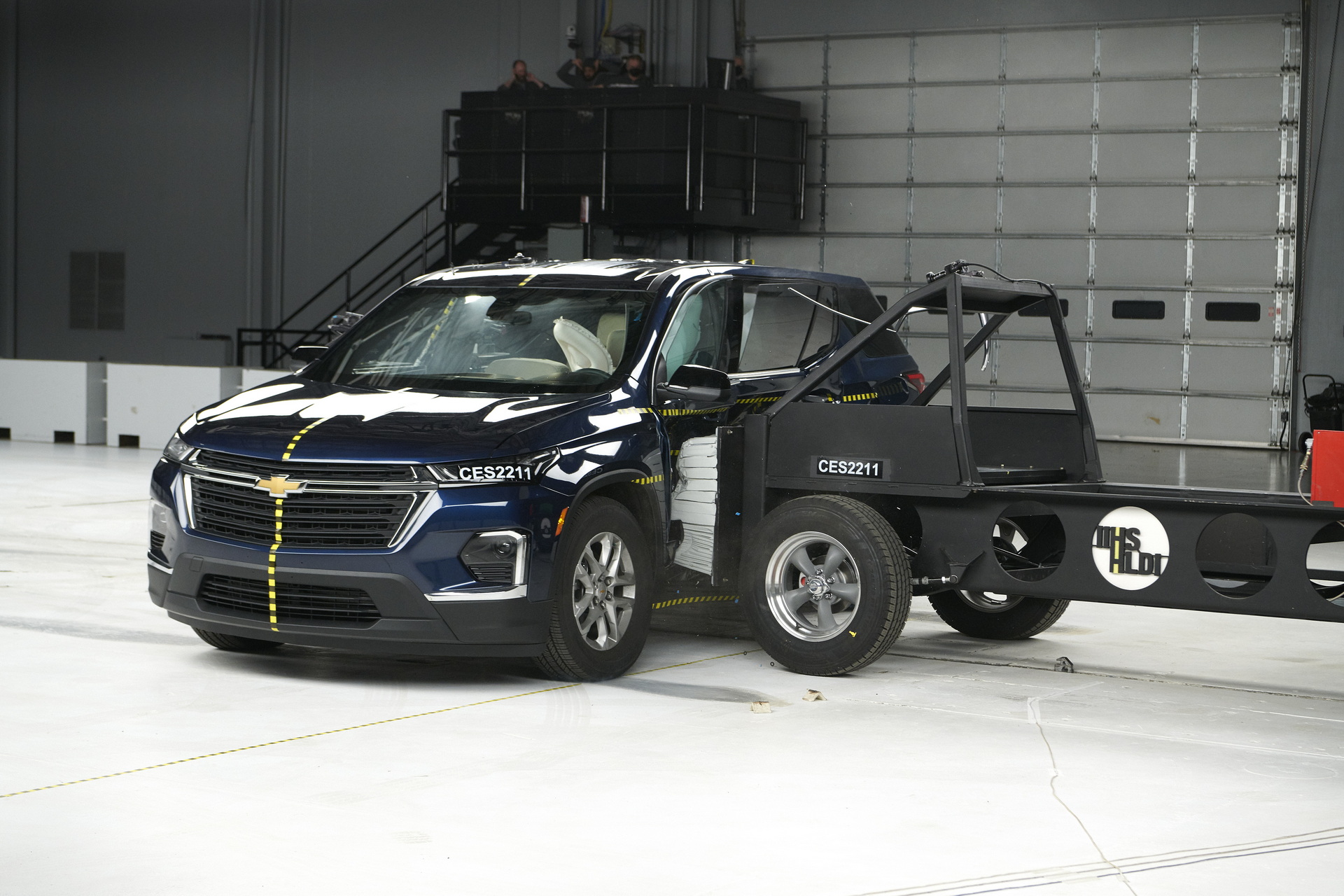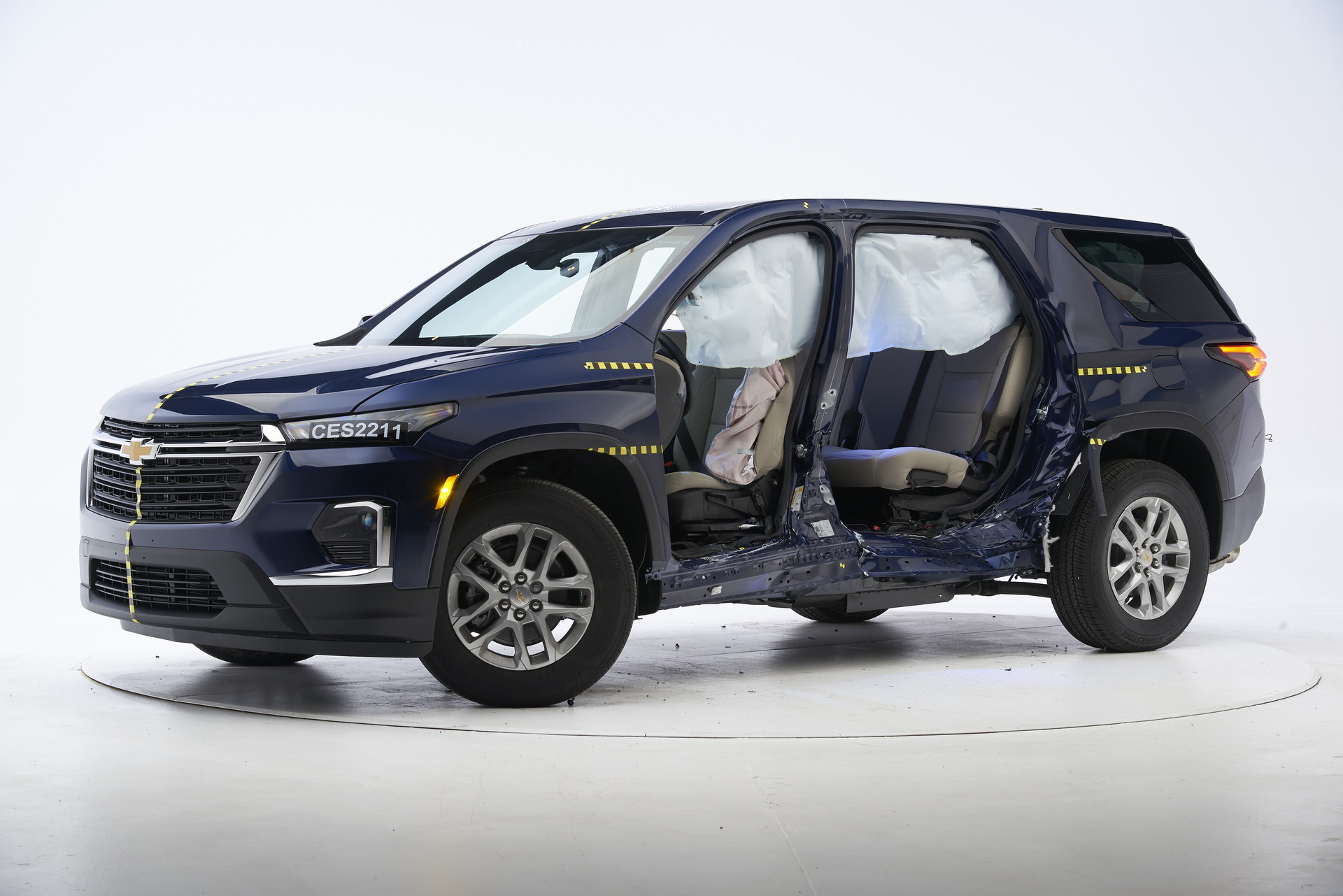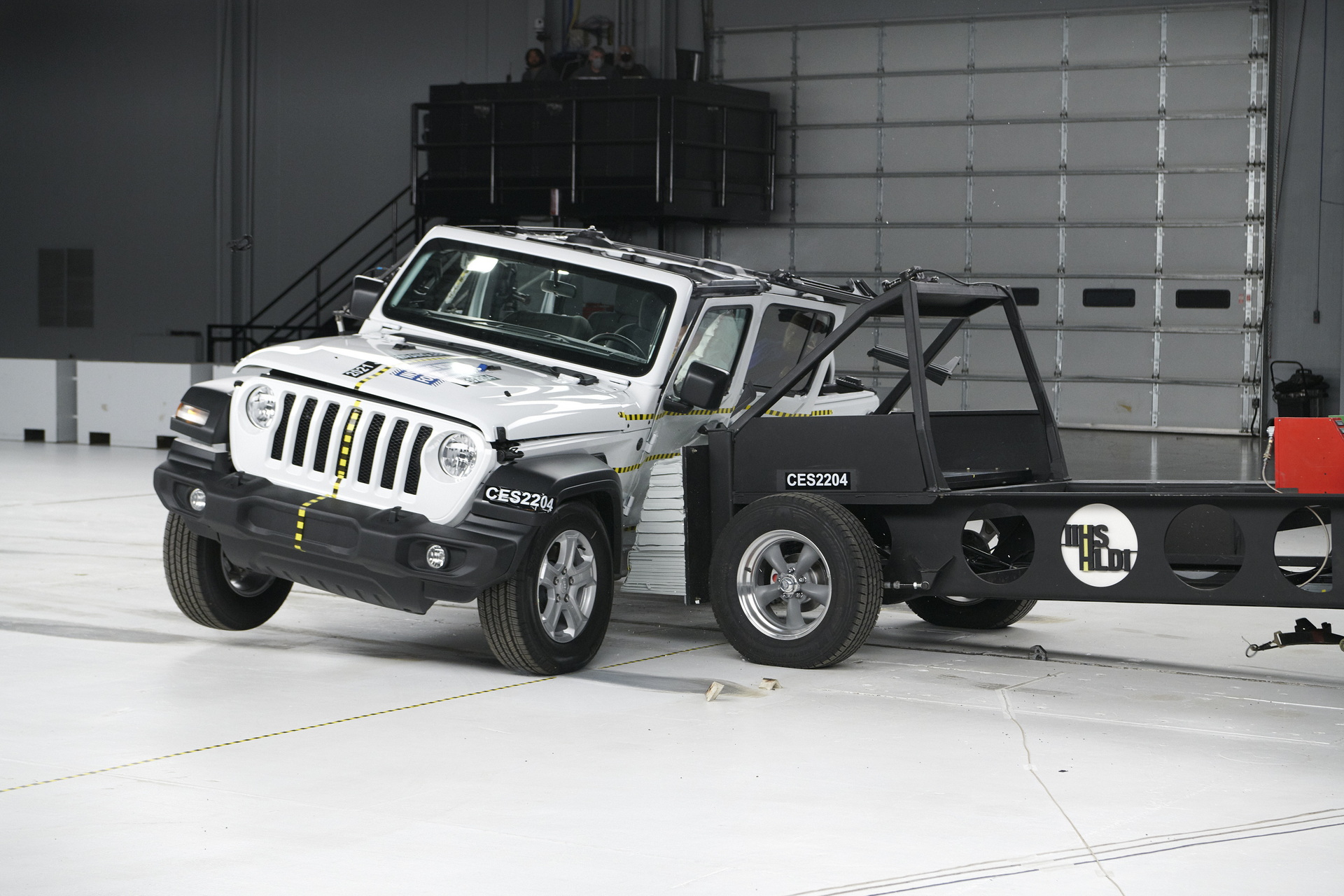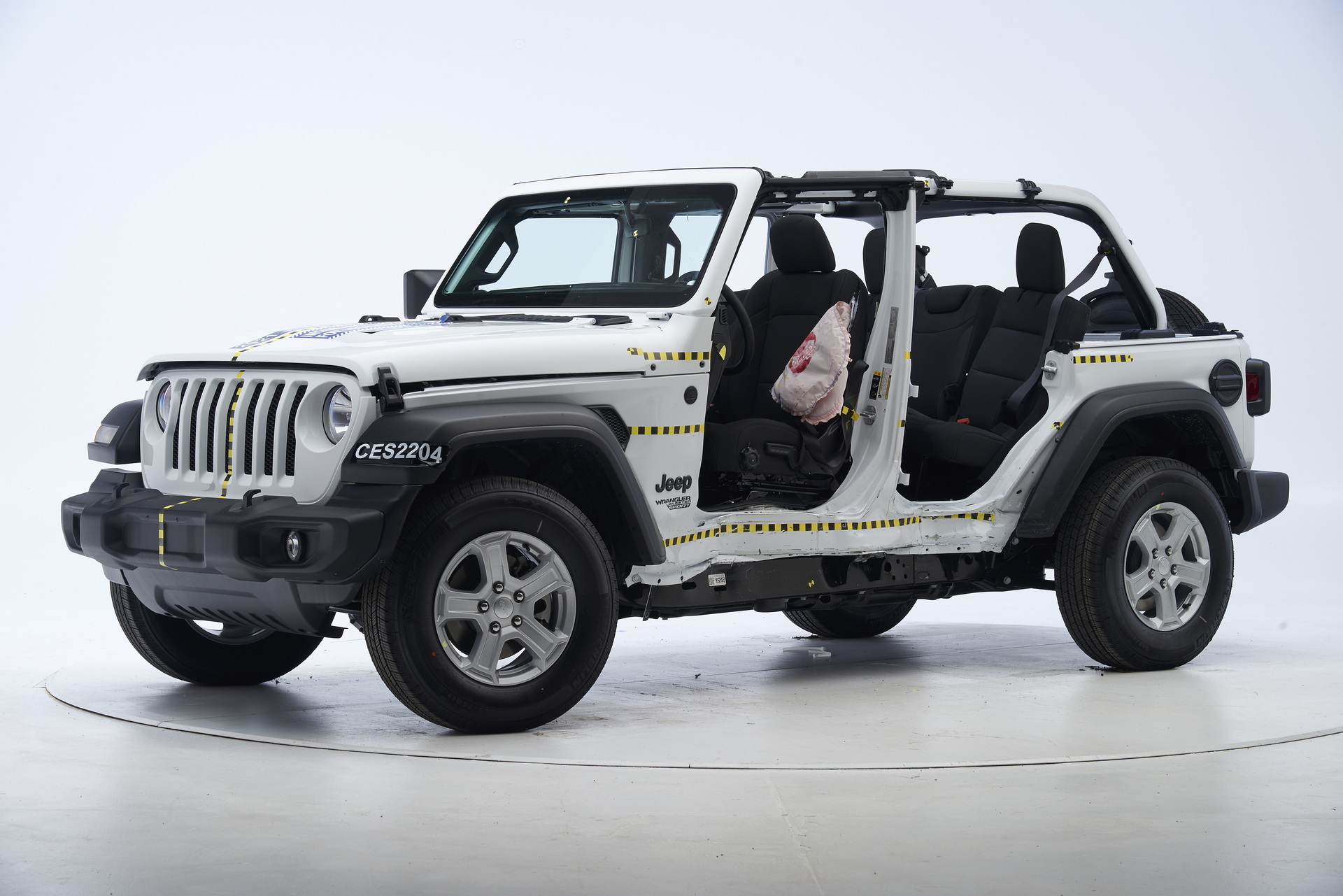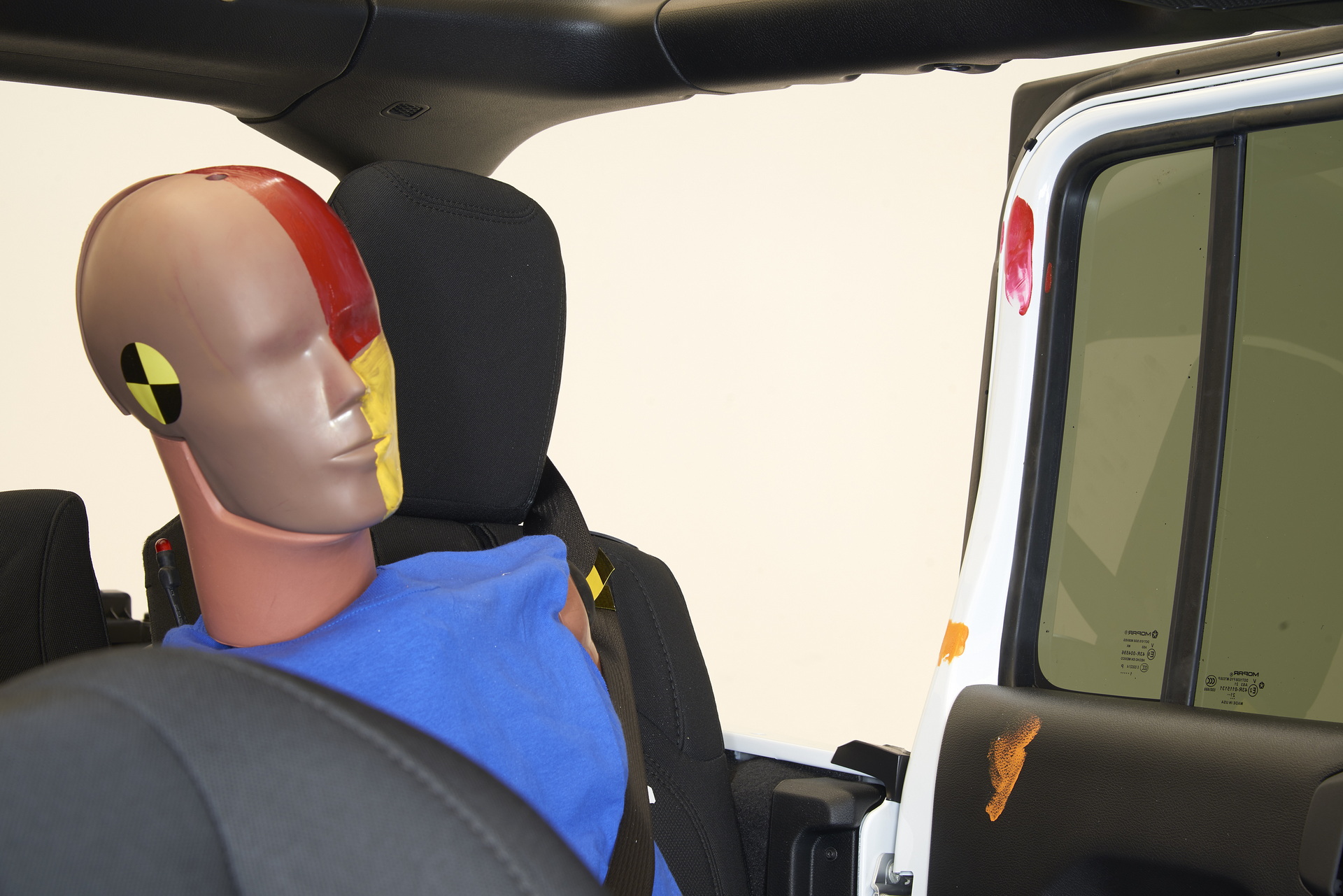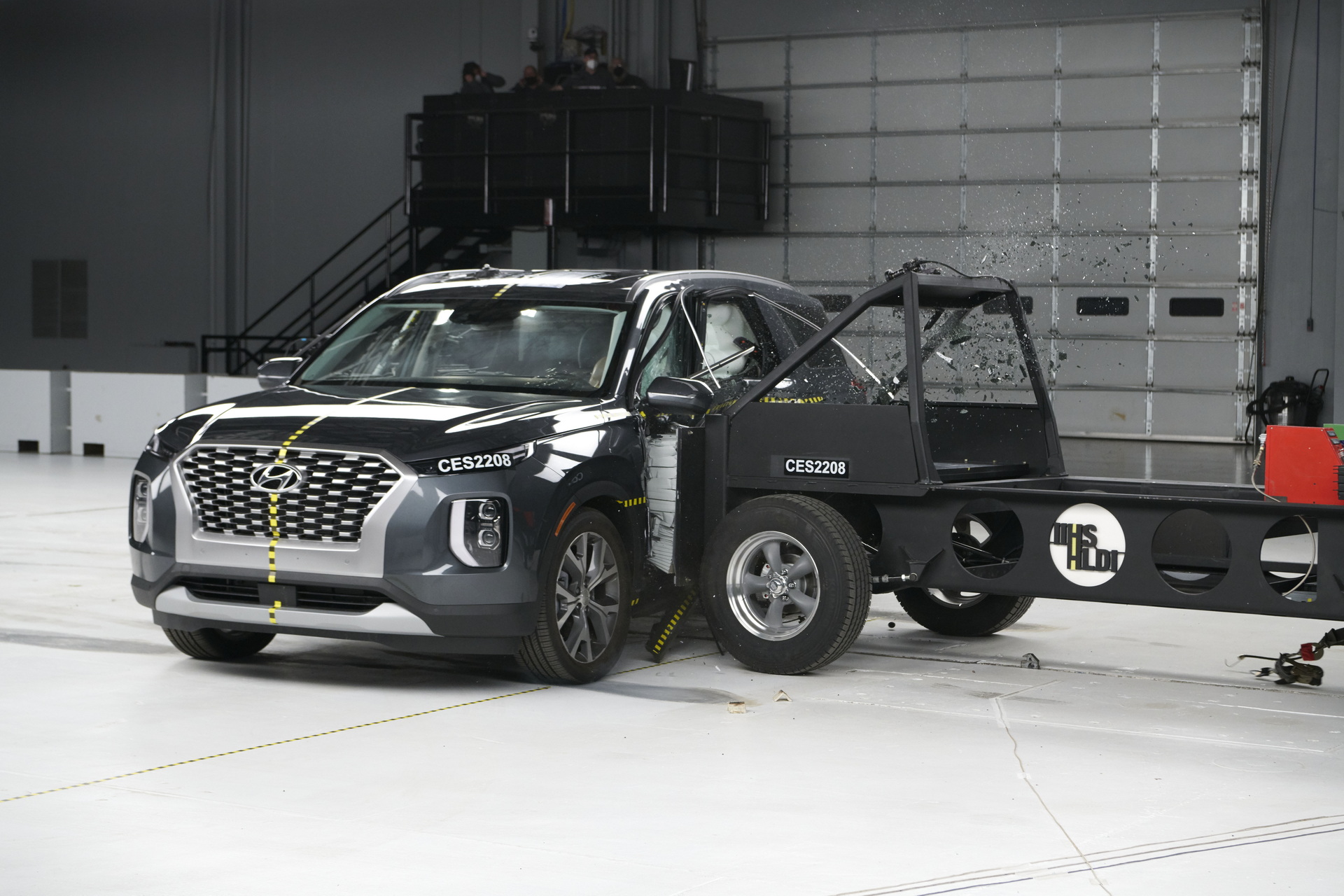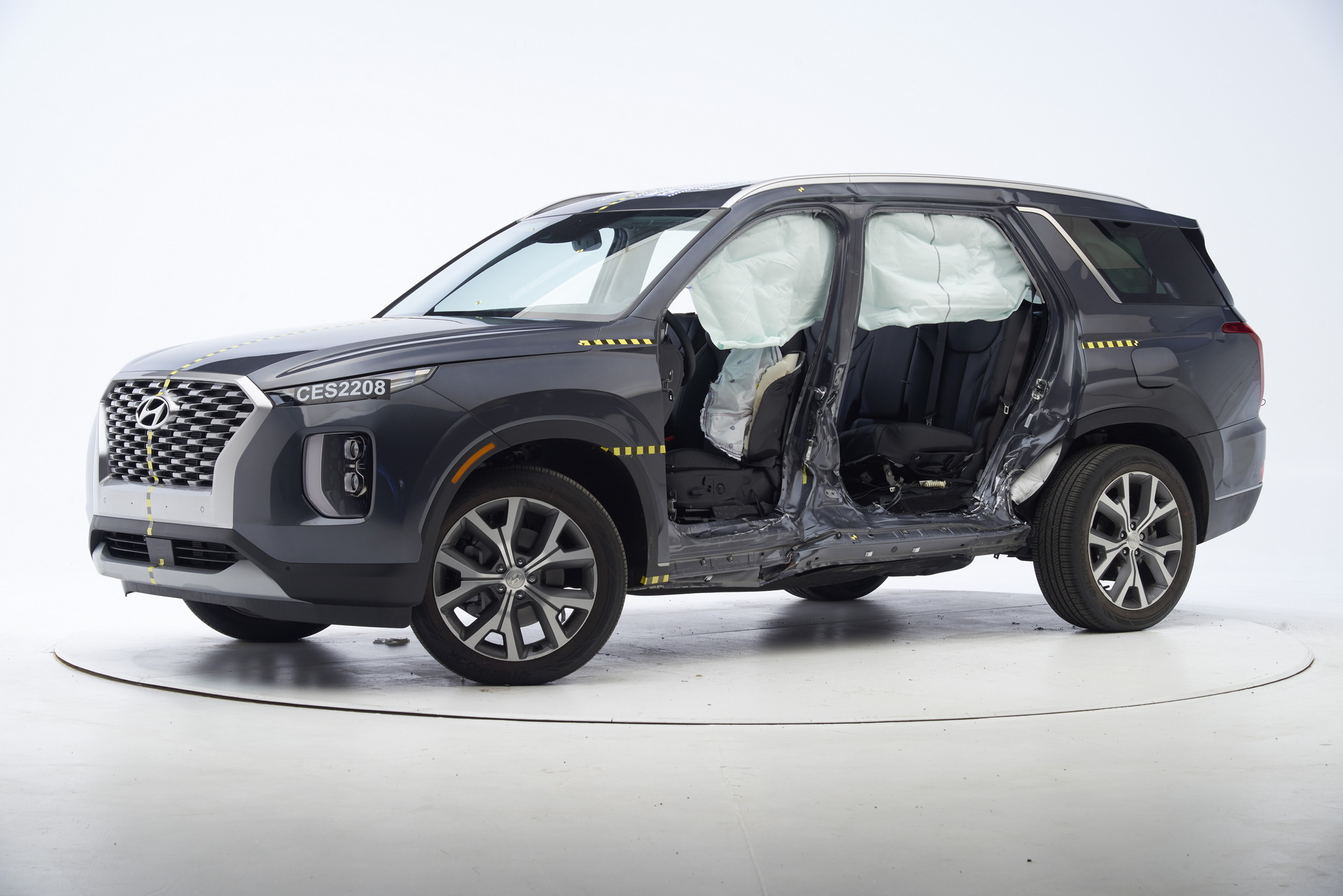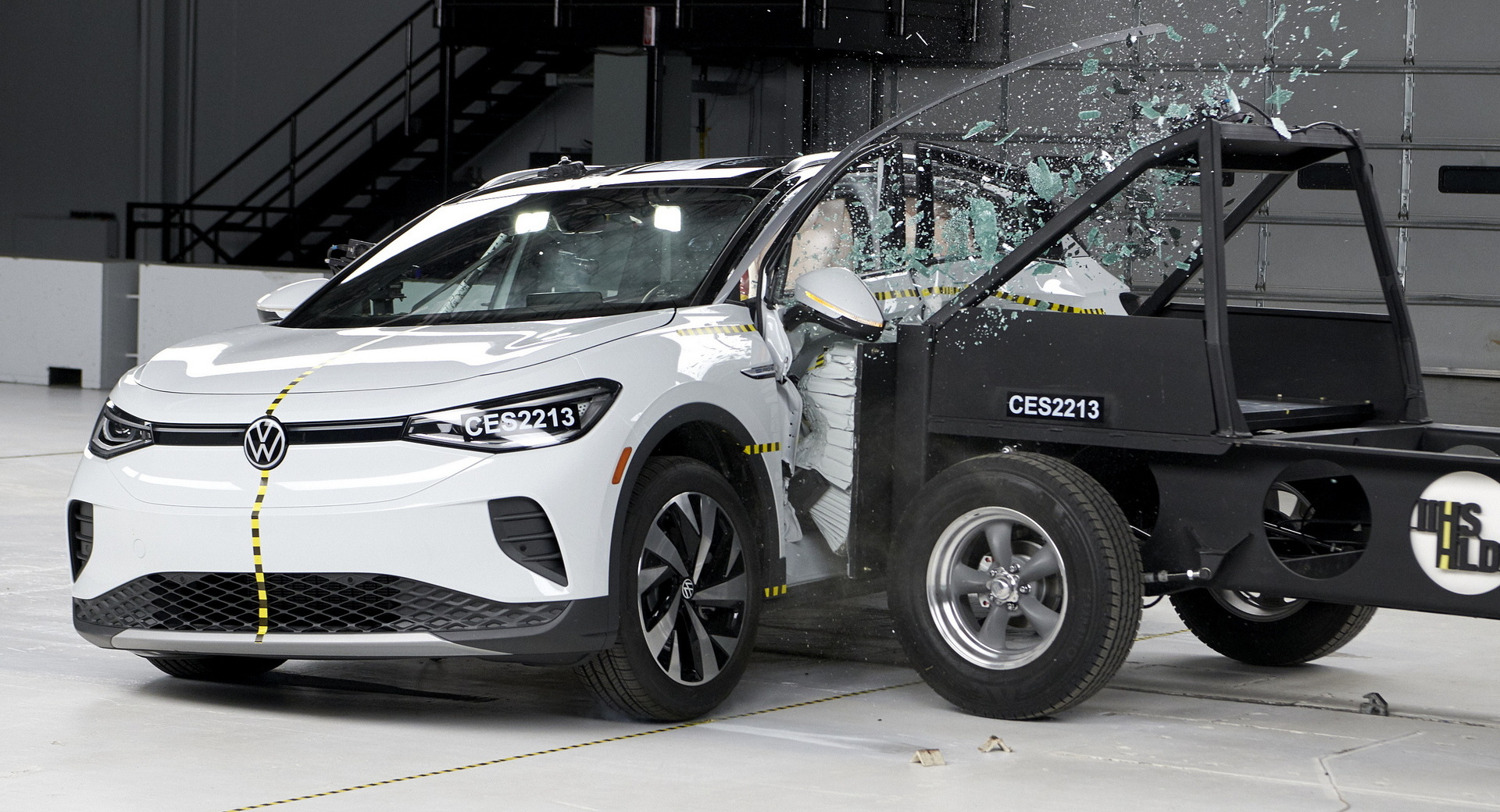The Insurance Institute for Highway Safety (IIHS) today revealed a set of results of its new and more difficult side impact test. The vehicles being tested this time were midsize SUVs and they actually did pretty well.
The institute previously released the findings of its new testing regimen on small SUVs, in which just one vehicle earned an overall “Good” rating. For midsize SUVs, that number has risen to more than half.
In all, 10 out of the 18 vehicles tested earned a “Good” rating: the Ford Explorer, Infiniti QX60, Lincoln Aviator, Mazda CX-9, Nissan Pathfinder, Subaru Ascent, Toyota Highlander, Volkswagen Atlas, Volkswagen Atlas Cross Sport, and Volkswagen ID.4, all 2022 models.
Read Also: The IIHS Has Introduced A Tougher Side-Impact Crash Test And Small SUVs Are Struggling
Of that group, though, the VW ID.4 and the Mazda CX-9 were the only to earn “Good” ratings across all driver and passenger injury measures, including “structure & safety cage,” “torso,” “Driver head protection,” “rear passenger head protection,” and others.
The Jeep Wrangler 4-door was the only vehicle to get a “Poor” rating in that last category as a result of its lack of rear curtain airbags. It was among six vehicles (Nissan Murano, Kia Telluride, Hyundai Palisade, Honda Pilot, and Honda Passport) to earn a “Marginal” rating under the new testing scheme. The Buick Enclave and Chevrolet Traverse, meanwhile, earned a slightly higher “Acceptable” rating.
The new test was designed to better reflect the modern automotive landscape. The evaluation now uses a 4,200 lbs (1,905 kg) barrier to crash into the test vehicle, to better reflect the weight of modern SUVs. That’s up from the 3,300 lb (1,497 kg) barrier used previously. The barrier itself is now has a honeycomb frontal area that acts more like a modern vehicle when it’s crashing.
The updated test is in many ways an endorsement of the work that automakers have done in making vehicles safer. Under the old parameters, a lot of vehicles were passing so the IIHS decided that it could make the tests harder in order to encourage automakers to make safer vehicles, as well as to help customers better differentiate between vehicles.
As a result of that, the heavier barrier is now also running into test vehicles at 37 mph (60 km/h) instead of 31 mph (50 km/h). Together, these modifications mean that vehicles undergoing the test are being subjected to 82 percent more energy.
“It’s encouraging to see so many midsize SUVs from different automakers earn good ratings in this more challenging evaluation,” says IIHS Senior Research Engineer Becky Mueller, whose research formed the foundation for the new test protocol. “These results will help confirm the adjustments they need to make to other vehicles going forward.”








